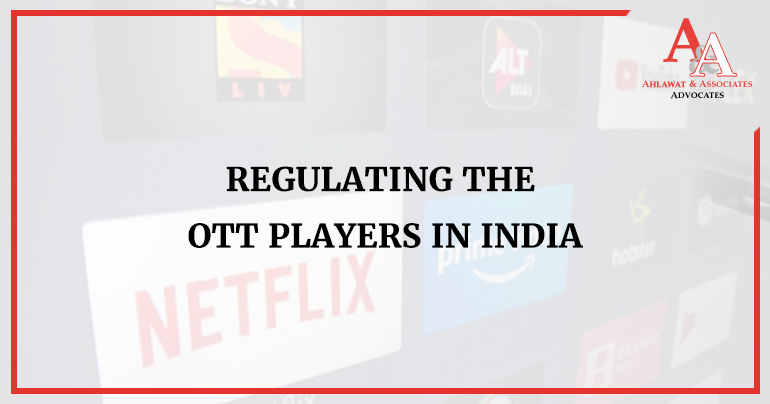
In general parlance and practice, an over-the-top (“OTT”) service is an online streaming service offered to the viewers directly via the internet, which rides on the operator’s network offering internet services. Though there is no globally accepted definition of the OTT services, the term can mean different things to different people.
Moreover, under just about any use of the term, it is incredibly broad because it captures potentially every type of service on the internet, whether banking, buying a movie ticket, voting or communicating. The European Electronic Communications Code (“EECC”) completely refrains from using this term and the term “over the top” is nowhere to be found in the nearly 600-page document, instead, EECC refers to three types of relevant electronic communications services i.e. (i) internet access service; (ii) interpersonal communications services; and (iii) services that are engaged wholly or mainly in the conveyance of signals.
The OTT Players have become largely beloved by the audience in India and around the globe since the last few years. These players have outflanked the traditional telecommunication service providers i.e. the satellite television platforms, cable and broadcasts.
The main reason is that the vast majority of content, applications, and services delivered over the internet are not substitutes for or functionally equivalent to traditional telecommunications services. Indeed, by their very nature, applications used via the internet are not functionally equivalent to services delivered over traditional telecommunications networks. The traditional telephone services do not allow video chats, instant messaging, document and file sharing, or emojis as part of a conversation—all of which and much more are not only possible with applications accessed via the internet, but usually a necessity in the competitive marketplace.
For instance, due to the COVID-19 pandemic in India, most of the Bollywood filmmakers instead of waiting for the cinemas to re-open are now releasing their movies on major OTT platforms like Disney+Hotstar, Amazon-prime video, Netflix, Zee5, etc.
There are a lot of regulatory imbalances between telecom service providers and OTTs, and issues related to security, safety and privacy of the consumer as observed by the Telecom Regulatory Authority of India (“TRAI”). While determining such imbalances and issues, TRAI has stated that regulating the OTT players is complicated.
Having stated the aforestated, TRAI has issued consultation papers on the regulatory framework for OTT services on 27th March 2015, 12th November 2018 and pre-consultation paper and consultation in the year 2016, thereby inviting comments from stakeholders, but the regulator is yet to come out with its recommendations.
With the aim to provide a regulatory code for video streaming platforms, on 5th February 2020, the Internet and Mobile Association of India (“IAMAI”) at its annual India Digital Summit, launched the Code for Self-Regulation of Online Curated Content Providers ("Code”), which follows up an earlier ‘Code of Best Practices for Online Curated Content Providers’ put out in January 2019 by IAMAI.
The Code, which has become effective from 15th August 2020, provides for self-regulation - governing the curated streaming content, which has been signed by 15 leading OTT Players, namely Zee5, Viacom 18, Disney Hotstar, Amazon Prime Video, Netflix, MX Player, Jio Cinema, Eros Now, Alt Balaji, Arre, HoiChoi, Hungama, Shemaroo, Discovery Plus and Flickstree. It seeks to establish an independent enforcement authority called the Digital Content Complaint Council (“DCCC”) to oversee a signatory’s content-related practices, wherein all the signatory’s shall be required to comply with various content regulation guidelines in a time-bound manner.
The DCCC is a self-regulatory body that would have powers to penalise streaming services for violating some baseline content norms and operates a mechanism which is eerily similar and largely derivative of the Broadcast Content Complaints Council (BCCC) which essentially governs content on non-news and television channels in India.
The Code provides for constitution of the DCCC, which shall be chaired by a retired High Court or Supreme Court judge and is designed to include eight (8) other members, out of which three members shall be from the national level statutory commissions. The Code further establishes a two-tier complaint redressal mechanism for ensuring compliance with the Code.
However, with some streaming services having supported the DCCC, there are quite a few opposing its formation, leading to clashes of opinion on how to proceed. After weeks of talks, it now seems that the IAMAI has proposed the appointment of an ombudsman, which is an added layer of bureaucracy and operates as a compromise, thereby leaving streaming services to self-regulate.
Feel free to contact us for any issues related to Media And Entertainment. A&A has a team of dedicated Media And Entertainment lawyers who provide comprehensive legal assistance pertaining to the advertising, media and entertainment industry.
It may be concluded that the concept of self-regulation and censorship may seem to be a liability reduction initiative, which may now, however, lead to some future intervention if the same is not complied with.

Gain valuable knowledge on navigating the complex legal terrain of India's fintech industry, including compliance, licensing, and regulatory requirements. Stay ahead of the curve with expert insights to thrive in this rapidly evolving sector.
View More
Navigate complexities of setting up a pharmaceutical manufacturing unit in India. Step-by-step guide covers regulatory, infrastructure, and success strategies.
View More
Ensure legal compliance when registering a gaming company in India with this comprehensive checklist covering essential steps and regulations.
View More















 Cookies Consent
Cookies ConsentWe use cookies to help you navigate efficiently and perform certain functions. You will find detailed information about all cookies under each consent category below. Read more...
 Cookies Consent
Cookies ConsentWe use cookies to help you navigate efficiently and perform certain functions. You will find detailed information about all cookies under each consent category below. Read more...


Comments
Post A Comment
Your email address will not be published *